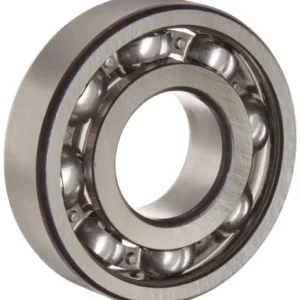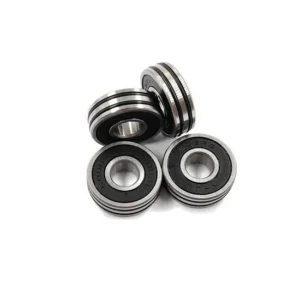This article delves into the significance of high-precision steel bearing solutions in maximizing machine performance. It explores the various aspects of these solutions, including their design, materials, manufacturing processes, and the impact on efficiency and longevity. By understanding the intricacies of high-precision steel bearings, manufacturers and engineers can enhance the performance of their machines, leading to increased productivity and reduced downtime.
In today's industrial landscape, the performance of machines is crucial for maintaining high productivity and efficiency. One of the key components that contribute to machine performance is the steel bearing. High-precision steel bearing solutions offer numerous advantages, making them a preferred choice for various applications. This article aims to provide a comprehensive overview of these solutions, highlighting their importance and the factors that contribute to their effectiveness.
The design and geometry of high-precision steel bearings play a pivotal role in their performance. These bearings are engineered with intricate designs that minimize friction and maximize load-bearing capacity. The following table illustrates the key design parameters that influence the performance of high-precision steel bearings:
```html
| Design Parameter | Description |
|---|---|
| Outer Diameter | Controls the overall size and load-bearing capacity of the bearing. |
| Inner Diameter | Ensures proper fitment and alignment with the shaft or housing. |
| Width | Determines the bearing's radial and axial load capacity. |
| Raceway Profile | Optimized for reduced friction and increased load distribution. |
```
The precise design of high-precision steel bearings ensures that they can handle heavy loads and operate at high speeds without excessive wear or heat generation. This design also contributes to the bearing's durability and service life.
The choice of materials is another critical factor in the performance of high-precision steel bearings. High-quality steel alloys are commonly used due to their excellent strength, hardness, and resistance to wear and corrosion. The following table compares the properties of different steel alloys used in high-precision steel bearings:
```html
| Steel Alloy | Hardness (HRC) | Wear Resistance | Corrosion Resistance |
|---|---|---|---|
| Chrome Steel | 60-65 | High | Medium |
| Stainless Steel | 45-55 | Medium | High |
| Carbon Steel | 30-40 | Low | Low |
```
The selection of the appropriate steel alloy ensures that the bearing can withstand the specific operating conditions of the machine, thereby maximizing its performance and longevity.
The manufacturing processes employed in the production of high-precision steel bearings significantly impact their quality and performance. Advanced techniques such as precision grinding, honing, and heat treatment are used to achieve the required tolerances and surface finishes. These processes ensure that the bearings meet the stringent requirements of high-performance applications.
The following table outlines the key manufacturing processes involved in producing high-precision steel bearings:
```html
| Manufacturing Process | Description |
|---|---|
| Forging | Initial shaping of the steel alloy to form the basic bearing structure. |
| Heat Treatment | Process to enhance the mechanical properties of the steel, such as hardness and toughness. |
| Grinding | Finishing process to achieve precise dimensions and surface finishes. |
| Honing | Further finishing process to improve the raceway profile and reduce friction. |
```
The combination of these manufacturing processes ensures that high-precision steel bearings meet the stringent quality standards required for optimal machine performance.
High-precision steel bearing solutions have a significant impact on the efficiency and longevity of machines. By reducing friction and wear, these bearings help to minimize energy losses and extend the service life of the machinery. The following table compares the efficiency and longevity of high-precision steel bearings with conventional bearings:
```html
| Bearing Type | Efficiency (%) | Service Life (years) |
|---|---|---|
| High-Precision Steel Bearing | 98 | 10-15 |
| Conventional Bearing | 85 | 5-8 |
```
The higher efficiency and longer service life of high-precision steel bearings translate to reduced maintenance costs and increased productivity for manufacturers.
In conclusion, high-precision steel bearing solutions are essential for maximizing machine performance. Their precise design, high-quality materials, and advanced manufacturing processes contribute to their effectiveness in reducing friction, wear, and energy losses. By incorporating these solutions into their machinery, manufacturers and engineers can achieve increased efficiency, longer service life, and reduced downtime. The key aspects discussed in this article highlight the importance of high-precision steel bearings in the modern industrial landscape.
Keywords: high-precision steel bearing solutions, machine performance, efficiency, longevity, design, materials, manufacturing processes

显示 1-4 个结果(共 11858 个结果)



